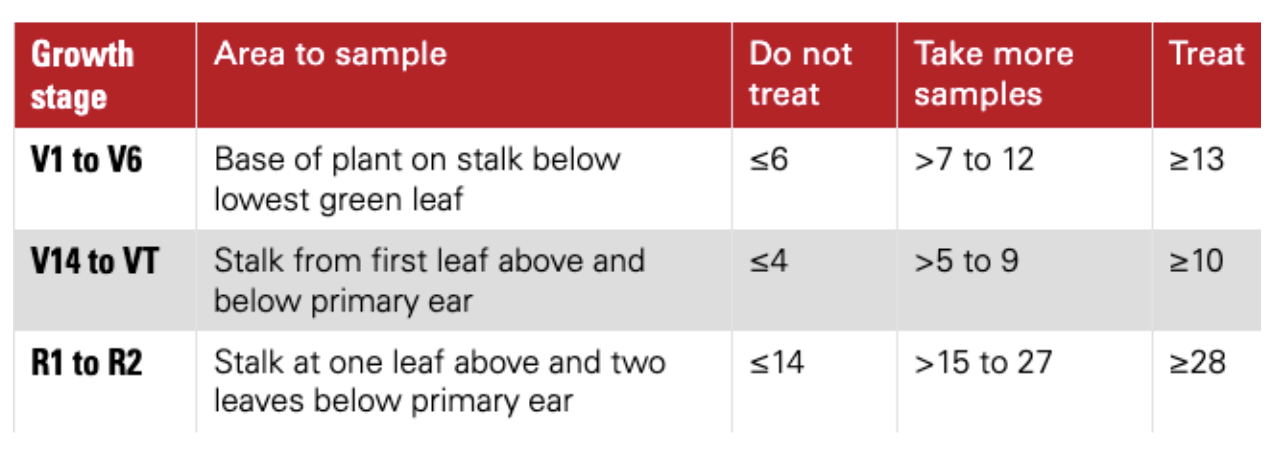Camden Crop News: April 2023
go.ncsu.edu/readext?932895
en Español / em Português
El inglés es el idioma de control de esta página. En la medida en que haya algún conflicto entre la traducción al inglés y la traducción, el inglés prevalece.
Al hacer clic en el enlace de traducción se activa un servicio de traducción gratuito para convertir la página al español. Al igual que con cualquier traducción por Internet, la conversión no es sensible al contexto y puede que no traduzca el texto en su significado original. NC State Extension no garantiza la exactitud del texto traducido. Por favor, tenga en cuenta que algunas aplicaciones y/o servicios pueden no funcionar como se espera cuando se traducen.
Português
Inglês é o idioma de controle desta página. Na medida que haja algum conflito entre o texto original em Inglês e a tradução, o Inglês prevalece.
Ao clicar no link de tradução, um serviço gratuito de tradução será ativado para converter a página para o Português. Como em qualquer tradução pela internet, a conversão não é sensivel ao contexto e pode não ocorrer a tradução para o significado orginal. O serviço de Extensão da Carolina do Norte (NC State Extension) não garante a exatidão do texto traduzido. Por favor, observe que algumas funções ou serviços podem não funcionar como esperado após a tradução.
English
English is the controlling language of this page. To the extent there is any conflict between the English text and the translation, English controls.
Clicking on the translation link activates a free translation service to convert the page to Spanish. As with any Internet translation, the conversion is not context-sensitive and may not translate the text to its original meaning. NC State Extension does not guarantee the accuracy of the translated text. Please note that some applications and/or services may not function as expected when translated.
Collapse ▲Fast & Furious
I am not referring to the popular street car racing movie series, but this title seems fitting for most of our planting seasons thus far. As we continue into the growing season if you notice issues in your fields or areas not growing well, give me a call.
Crop problem solving is one of my favorite parts of this job. If the issue calls for plant tissue sampling, soil sampling, nematode sampling, or a sample needs to be sent to our NC State Plant Disease & Insect Clinic, I have resources available to support this at no cost to you and am happy to help.
2023 NC Wheat Yield Contest Announcement
Please find an announcement from Dr. Angela Post regarding changes to the 2023 NC wheat yield contest. Please let me know if you have any questions or concerns.
4/14/2023 Wrote By: Dr. Angela Post, NCSU Small Grains Specialist
Starting in 2023, the North Carolina wheat yield contest will be administered by the National Wheat Foundation as a part of the National Wheat Yield Contest. Over the next three weeks we will be releasing details on this adjustment so that growers can be successful getting entries submitted to the contest. The biggest change is the requirement to declare you will be entering the contest by May 15th 2023. At that time the entry fee needs to be paid (early entry by April 1st $100; late entry by May 15th $125 per entry) and the variety you will enter needs to be declared. We have a limited number of entry vouchers available for growers to use and we are encouraging growers to inquire with their seed dealer or brand representative to sponsor their entries. Additional changes are: 1) only one certifier will need to be present in the field with the farmer when the wheat is cut; 2) a wheat quality sample needs to be collected and retained; 3) if a contest entry cuts above 150 bu/acre, a second cut will be required to
confirm; and 4) rates of crop protection products are required as part of the production information collected. You can find the full rules for the national wheat yield contest online. By entering the national contest, you will automatically be entered into the North Carolina contest if you are an NC grower. We will release comprehensive guidance on entering the contest over the next two weeks. If you have questions about this change or about entering the contest, please contact your local county agent or Angela Post (arricha3@nsu.edu). Flyer about the contest.
Wheat Research Tour: May 10th
We will be hosting a “whistle stop” tour with Dr. Angela Post to highlight wheat research conducted at the Northeast Ag Expo Small Grain Field Day test site: 1209 Toxey Rd, Elizabeth City, NC 27909, on Wednesday, May 10th from 8:30 a.m.-10:30 a.m. We have a number of trials at the site including a replicated wheat variety trial, a plant population by nitrogen rate and time of application, foliar fungicide test, and herbicide test.
Preparing for Stink Bugs in Corn
In wheat fields recently I have noticed a number of brown stink bugs. With the corn growing season well underway, please find our latest stink bug thresholds below. Dr. Dominic Reisig, NC State Extension Entomologist, highly recommends using this partial plant sampling technique in the table below. These thresholds are backed by research and save 60% of the sampling time.
Thresholds
Thresholds vary depending on growth stage and are based on a 100 plant sample as described below (see table). These thresholds are not percentages, but numbers. If a single plant has multiple stink bugs, this must be counted into the total. If the number of stink bugs exceeds the number in the “treat” category, treat the field even if 100 plants have not been sampled. If the number of stink bugs per plant falls between the “treat” and “do not treat” category, take more samples until a confident decision can be made.
Alternatively, if the entire plant is sampled, thresholds are 1 per 10 plants (V1 to V6), 1 per 8 plants (V14 to VT), and 1 per 4 plants (R1 to R2).
An excerpt from a 2019 article wrote by Dr. Dominic Reisig stated: “Corn is susceptible to damage at three stages (roughly): V1 to V6, V14 to VT, and R1 to R4. Note that corn cannot be damaged by stink bugs from V7 until the primary and secondary ears are beginning to push out (just prior to tassel). You will find stink bugs in corn throughout the growing season, but the critical period to prevent ear damage is just prior to tasseling (a one-to-two-week window).” Read more online





